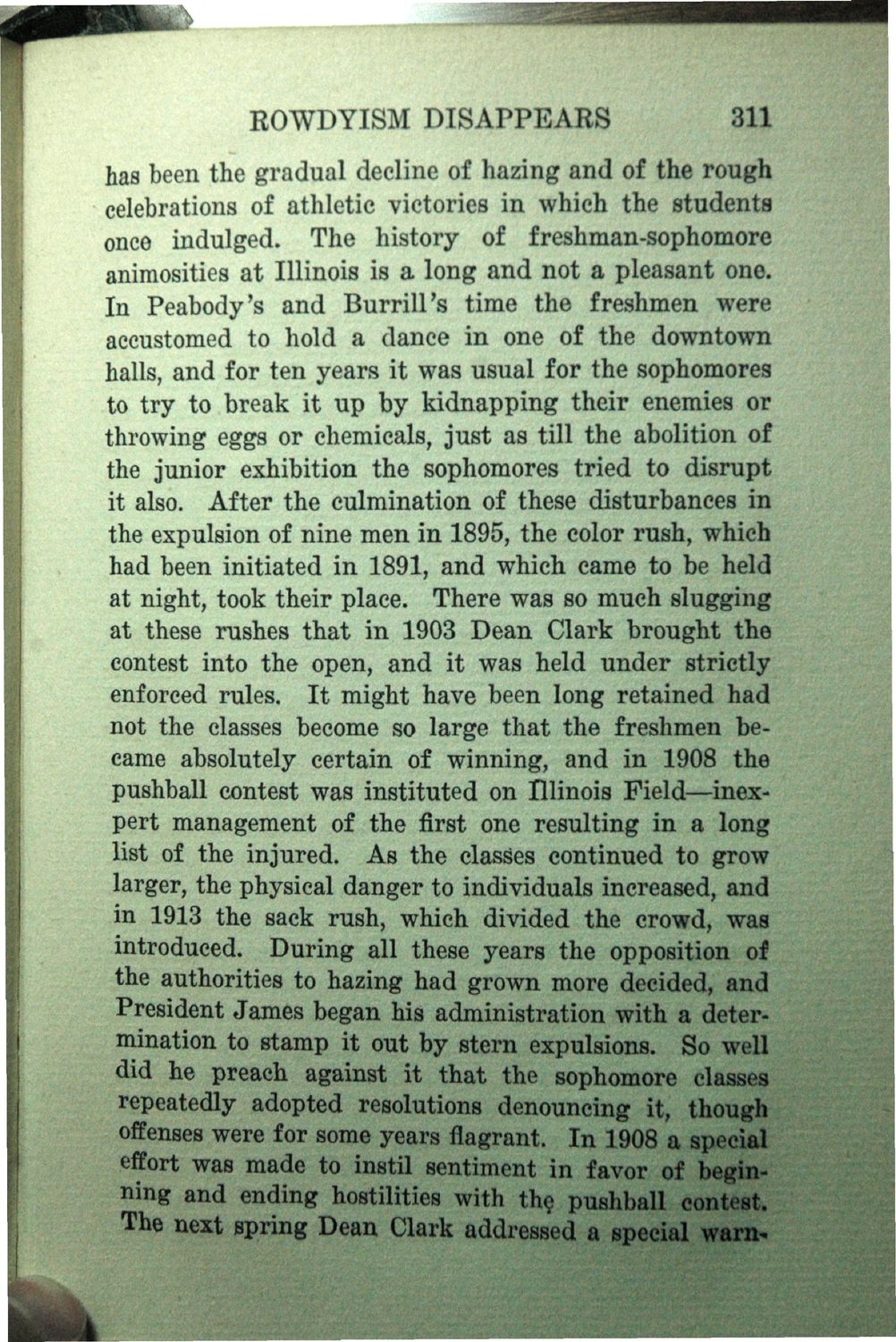| |
| |
Caption: Book - History of the University (Nevins)
This is a reduced-resolution page image for fast online browsing.

EXTRACTED TEXT FROM PAGE:
BOWDYISM DISAPPEARS 311 has been the gradual decline of hazing and of the rough celebrations of athletic victories in which tbe students once indulged. The history of freshman-sophomore animosities at Illinois is a long and not a pleasant one. In Peabody's and Burrill's time the freshmen were accustomed to hold a dance in one of the downtown halls, and for ten years it was usual for the sophomores to try to break it up by kidnapping their enemies or throwing eggs or chemicals, just as till the abolition of the junior exhibition the sophomores tried to disrupt it also. After the culmination of these disturbances in the expulsion of nine men in 1895, the color rush, which had been initiated in 1891, and which came to be held at night, took their place. There was so much slugging at these rushes that in 1903 Dean Clark brought the contest into the open, and it was held under strictly enforced rules. It might have been long retained had not the classes become so large that the freshmen became absolutely certain of winning, and in 1908 the pushball contest was instituted on Illinois Field—inexpert management of the first one resulting in a long list of the injured. As the classes continued to grow larger, the physical danger to individuals increased, and in 1913 the sack rush, which divided the crowd, was introduced. During all these years the opposition of the authorities to hazing had grown more decided, and President James began his administration with a determination to stamp it out by stern expulsions^ So well did he preach against it that the sophomore classes repeatedly adopted resolutions denouncing it, though offenses were for some years flagrant. In 1908 a special effort was made to instil sentiment in favor of beginning and ending hostilities with the. pushball contest. The next spring Dean Clark addressed a special warn-
| |